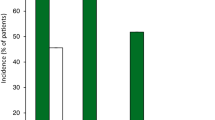Abstract
ANIMAL cells can convert 20-carbon polyunsaturated fatty acids into prostaglandins (PCs) and leukotrienes. These locally produced mediators of inflammatory and immunological reactions act in an autocrine or paracrine fashion1,2. Arachidonic acid (AA), the precursor of most PGs and leukotrienes, is present in the form of lipid esters within plasma lipoproteins and cannot be synthesised de novo by animal cells. Therefore, AA or its plant-derived precursor, linoleic acid, must be provided to cells if PGs or leukotrienes are to be formed2. Because several classes of lipoproteins, including low-density lipoproteins (LDL), very-low-density lipoproteins, and chylomicron remnants, are taken up by means of the LDL receptor3–5, and because LDL and very-low-density lipoproteins6–8, but not high-density lipoproteins6, stimulate PG synthesis, we have suggested previously that PG formation is directly linked to the LDL pathway6. Using fibroblasts with the receptor-negative phenotype of familial hypercholesterolaemia and anti-LDL receptor antibodies, we show here that LDL deliver AA for PG production and that an LDL receptor-dependent feedback mechanism inhibits the activity of PGH synthase, the rate-limiting enzyme of PG synthesis. These results indicate that the LDL pathway has a regulatory role in PG synthesis, in addition to its well-known role in the maintenance of cellular cholesterol homeostasis.
Similar content being viewed by others
Change history
09 August 1990
An Erratum to this paper has been published: https://doi.org/10.1038/346589a0
References
Samuelsson, B., Dahlén, D. A., Lindgren, C. A., Rouzer, C. A. & Serhan, C. N. Science 237, 1171–1176 (1987).
Needleman, P., Turk, J., Jakschik, B. A. & Morrison, A. R. A. Rev. Biochem. 55, 69–102 (1986).
Brown, M. S. & Goldstein, J. L. Science 232, 34–47 (1986).
Mahley, R. Science 240, 623–627 (1988).
Koo, C. et al. J. clin. Invest. 81, 1332–1340 (1988).
Habenicht, A. J. R. et al. Proc. natn. Acad. Sci. U.S.A. 83, 1344–1348 (1986).
Pomerantz, K. B., Tall, A. R., Feinmark, S. J. & Cannon, P. J. Circulation Res. 54, 554–565 (1984).
Spector, A. A. et al. J. Lipid Res. 26, 288–297 (1985).
Krieger, M. Meth. Enzym. 128, 608–613 (1986).
Moncada, S., Gryglewski, R., Bunting, R. & Vane, J. R. Nature 263, 663–666 (1976).
Goerig, M. et al. J. biol. Chem. 263, 19384–19391 (1988).
Smith, W. L. & Lands, W. E. M. Biochemistry 11, 3276–3283 (1972).
Habenicht, A. J. R. et al. Proc. natn. Acad. Sci. U.S.A. 86, 921–924 (1989).
Knight, B. L. & Soutar, A. K. Eur. J. Biochem. 125, 407–413 (1982).
Ross, R. New Engl. J. Med. 314, 488–500 (1986).
Rozengurt, E. et al. Cell 34, 265–272 (1983).
Rozengurt, E. Science 234, 161–166 (1986).
Heldin, C.-H. & Westermark, B. in Growth Factors, Differentiation Factors and Cytokines (ed. Habenicht, A.) 267–268 (Springer, Heidelberg, New York, Tokyo, 1989).
Seifert, R. A., Schwartz, S. M. & Bowen-Pope, D. F. Nature 311, 669–671 (1984).
Rubin, K. et al. Lancet i, 1353–1356 (1988).
Nowak, J. & Fitzgerald, G. A. Adv. Prost. Thrombox. Leukotr. Res. 17, 208–211 (1990).
Author information
Authors and Affiliations
Rights and permissions
About this article
Cite this article
Habenicht, A., Salbach, P., Goerig, M. et al. The LDL receptor pathway delivers arachidonic acid for eicosanoid formation in cells stimulated by platelet-derived growth factor. Nature 345, 634–636 (1990). https://doi.org/10.1038/345634a0
Received:
Accepted:
Issue Date:
DOI: https://doi.org/10.1038/345634a0
- Springer Nature Limited
This article is cited by
-
Low density lipoproteins mediated nanoplatforms for cancer targeting
Journal of Nanoparticle Research (2013)
-
Regulation and metabolism of arachidonic acid
Clinical Reviews in Allergy & Immunology (1999)
-
Lipoproteins and their functions
The Clinical Investigator (1994)
-
Localization of apolipoprotein(a) and B-100 in various renal diseases
Kidney International (1993)
-
Agonist‐induced lipoxin A4 generation: Detection by a novel lipoxin A4‐ELISA
Lipids (1993)





